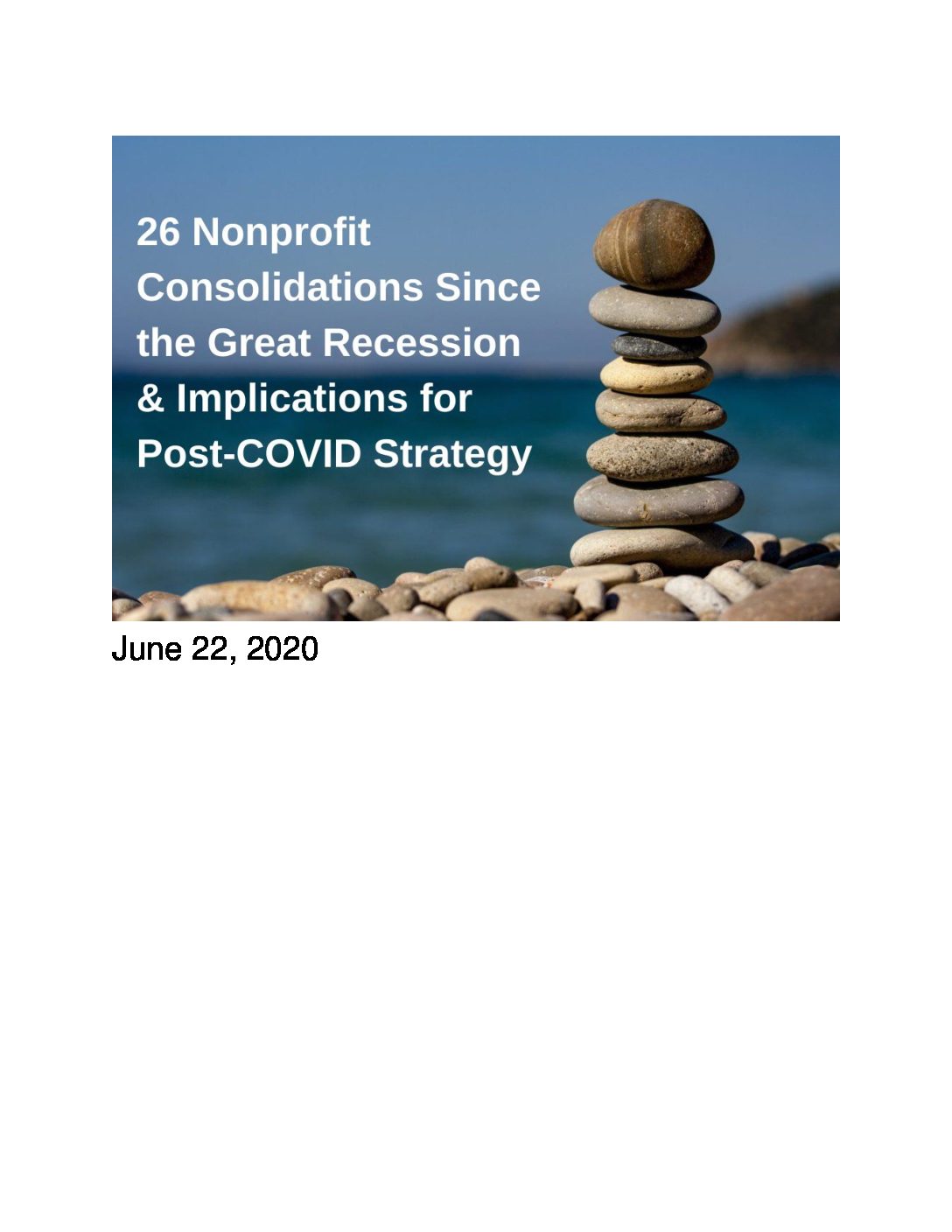26 Nonprofit Consolidations Since the Great Recession & Implications for Post-COVID Strategy
Why Study Nonprofit Mergers and Consolidations?
In the wake of the 2008 Great Recession, economic pressures forced many nonprofit organizations to rethink their operational models. Some pursued cost-cutting, others diversified funding—but a distinct number chose to merge or consolidate. These strategic nonprofit mergers offered an opportunity to align missions, streamline operations, and increase community impact.
Today, as nonprofits navigate the lingering impacts of the COVID-19 pandemic, these past consolidations offer critical lessons for organizations evaluating post-COVID nonprofit strategies.
Key Findings from 26 Nonprofit Consolidations
Over the past decade, Glick Davis & Associates has supported or studied 26 nonprofit partnerships, affiliations, and full mergers. Here’s what we learned:
1. Most Mergers Were Not Driven by Crisis
Contrary to popular belief, most consolidations were strategic, not reactive. While some organizations faced financial strain, the majority were actively seeking increased impact, expanded services, and long-term sustainability.
2. Cultural Alignment Is More Crucial Than Financials
Successful consolidations had less to do with balance sheets and more to do with mission fit, leadership chemistry, and stakeholder trust. Poor cultural alignment often led to operational challenges even in financially strong organizations.
3. COVID-19 Is a New Catalyst—but Not the Only One
The pandemic has accelerated conversations around nonprofit sustainability. But many of the same structural challenges from the 2008 era remain—fragmented service delivery, duplicated infrastructure, and competitive funding.
The Strategic Value of Nonprofit Mergers Today
As your organization plans for the next chapter, here are three reasons to revisit consolidation strategies:
✔ Expand Mission Impact
Merging with like-minded organizations allows you to scale services, pool resources, and amplify your mission.
✔ Strengthen Organizational Resilience
Combined leadership and diversified programs create more stable footing during uncertain times.
✔ Respond Proactively to Community Needs
Consolidation enables a more unified and coordinated response to evolving social, health, or economic challenges.
Common Misconceptions About Nonprofit Mergers
-
Myth: Mergers signal failure
Fact: Most are proactive moves toward sustainability and greater impact. -
Myth: Culture always clashes
Fact: With proper planning and facilitation, many organizations build stronger post-merger cultures. -
Myth: It’s all about cost savings
Fact: Financial efficiency is often a benefit, but mission alignment and strategy drive success.
Our Experience with Nonprofit Consolidations
Glick Davis & Associates has guided dozens of nonprofit and healthcare organizations through the full lifecycle of merger strategy—from preliminary assessment and due diligence to legal structuring, stakeholder engagement, and post-merger integration.
Our approach is collaborative, customized, and grounded in real-world experience.
Explore Our Full White Paper on: 26 Nonprofit Consolidations Since the Great Recession & Implications for Post-COVID Strategy
Download the full report to explore:
-
Success indicators and lessons learned
-
Strategic frameworks for evaluating merger readiness
-
Key questions to ask your board and leadership team
Frequently Asked Questions
What are signs my nonprofit should consider merging?
If your organization faces funding instability, leadership transitions, duplicated programs in the community, or a desire to grow impact, it may be time to explore consolidation.
How long does a nonprofit merger typically take?
On average, successful nonprofit mergers take 6 to 12 months, depending on scope, board engagement, legal complexity, and cultural readiness.
Can nonprofit mergers preserve both organizations’ identities?
Yes—structures like affiliations, partnerships, or shared services allow organizations to collaborate without full legal mergers.
Let’s Talk
If you’re considering a merger, partnership, or strategic consolidation, our team is here to guide the process.
Did you find this useful?
Get notified when more great resources are published on glickdavis.com!

